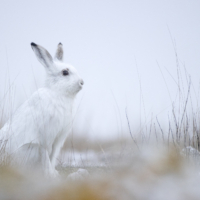This post is also available in: Swedish
Red fox – Vulpes vulpes
Red fox – Vulpes vulpes
is the largest of the true foxes and the most abundant wild member of the Carnivora, being present across the entire Northern Hemisphere from the Arctic Circle to North Africa, North America and Eurasia. It is listed as least concern by the IUCN. Its range has increased alongside human expansion, having been introduced to Australia, where it is considered harmful to native mammals and bird populations. Due to its presence in Australia, it is included among the list of the “world’s 100 worst invasive species.
The red fox originated from smaller-sized ancestors from Eurasia during the Middle Villafranchian period, and colonised North America shortly after the Wisconsin glaciation. Among the true foxes, the red fox represents a more progressive form in the direction of carnivory. Apart from its large size, the red fox is distinguished from other fox species by its ability to adapt quickly to new environments. Despite its name, the species often produces individuals with other colourings, including albinos and melanists. Forty-five subspecies are currently recognised,[8] which are divided into two categories: the large northern foxes, and the small, basal southern foxes of Asia and the Middle East.





































